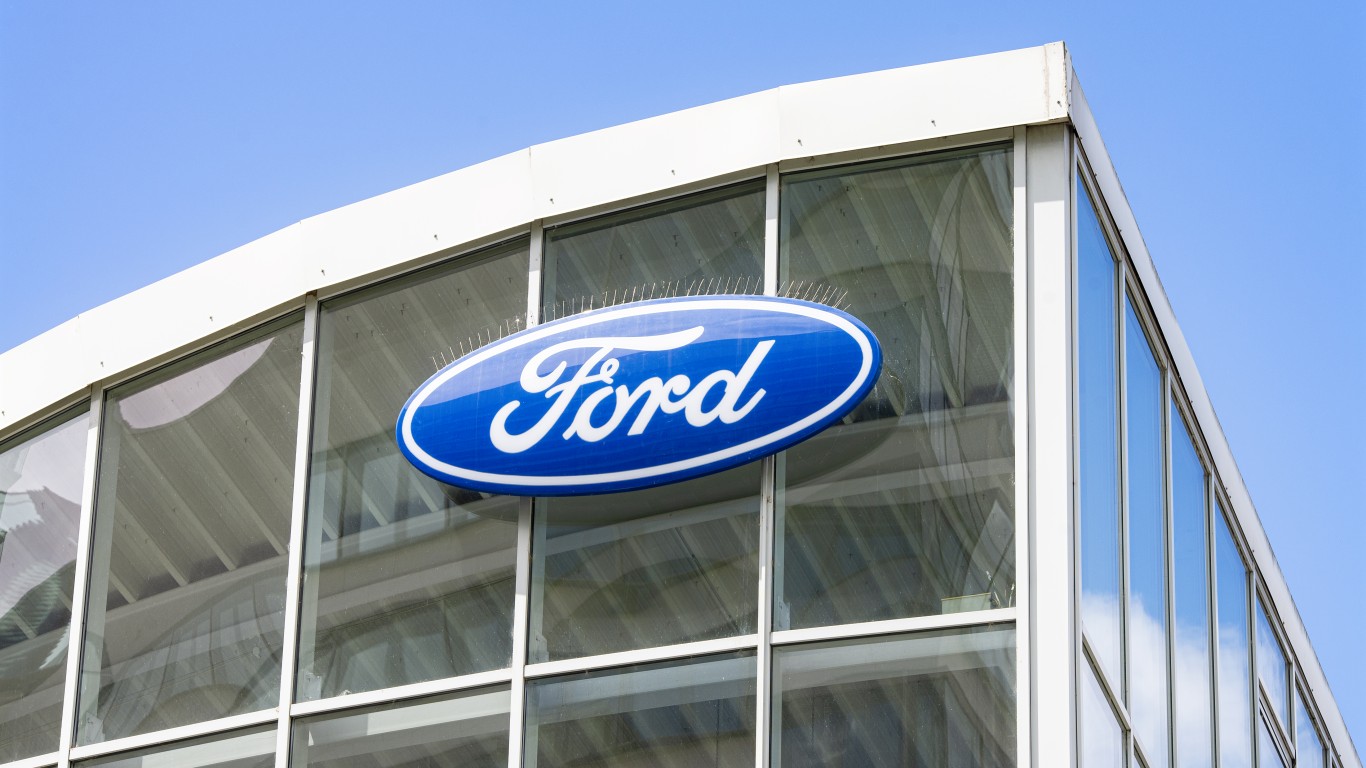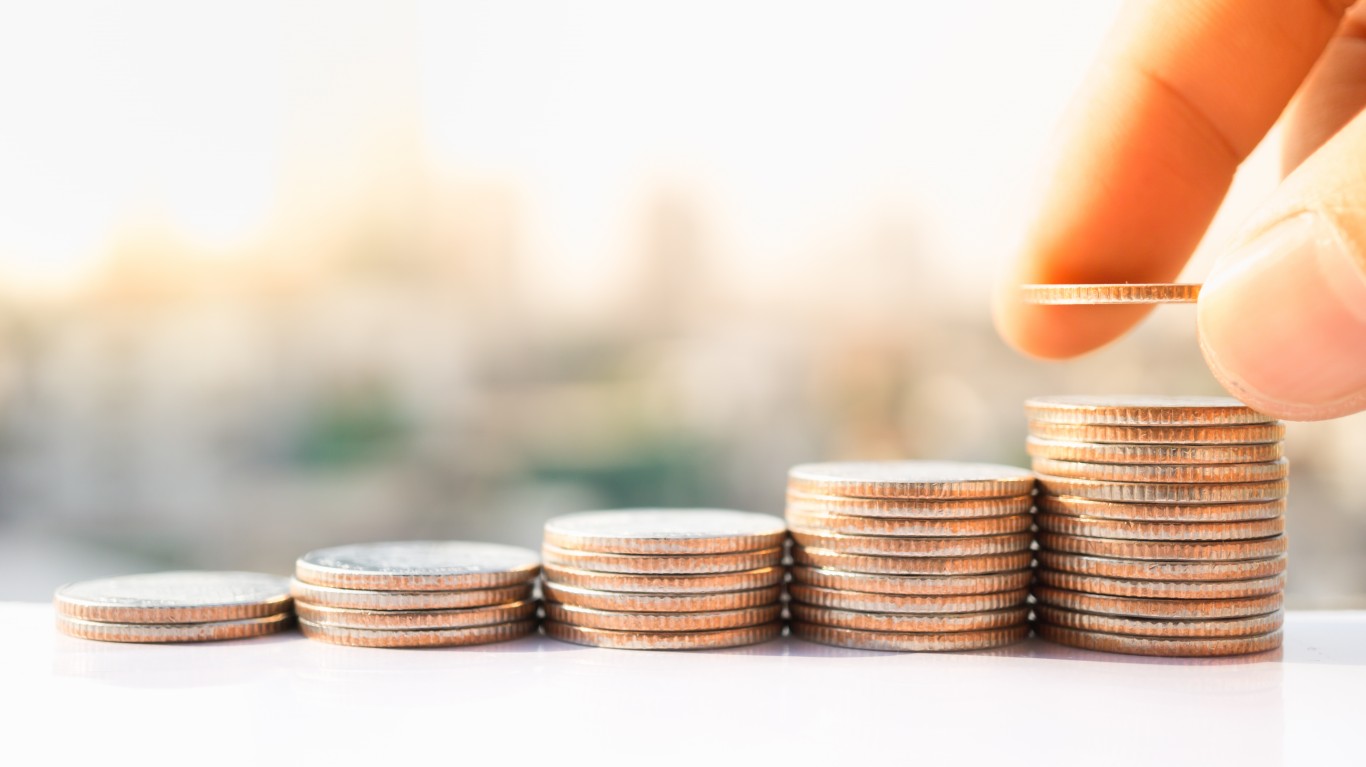
A key component of income investing is a portfolio that includes safe dividends, those that are unlikely to shrink or disappear. Recognizing when a dividend is stable and safe can be a challenge. Yet, certain metrics can offer clear signs for the investor looking to establish or shore up such a portfolio. What do these metrics tell us about the quarterly dividend at Ford Motor Co. (NYSE: F)?
Ford’s most recent payout was $0.15 a share, and the yield is now about 5.2%. The next ex-dividend date is expected at the end of January or in early February. The current yield is higher than that of competitors General Motors Co. (NYSE: GM) and Toyota Motor Corp. (NYSE: TM). It is also above the industry average of less than 1%.
Dividend Aristocrat?

Other Valuation Metrics

The dividend payout ratio indicates how much of a company’s earnings are paid out as a dividend. It is a sign of how safe a company’s dividend is and how much room it has for future growth. The higher the ratio, the greater the risk. Income investors often look for a dividend payout ratio of less than 60%. Ford’s current dividend payout ratio is around 38%. That is a little higher than its average over the past decade, and it is greater than the industry average of about 31%.
A look at free cash flow reveals whether the company has the funds required for its payout, as well as for share repurchases or even paying down debt or making acquisitions. Ford’s free cash flow was about $11.6 billion for the first three quarters of last year. It was in the red for 2022 but almost $9.6 billion for 2021. Income investors prefer growing free cash flows, but at Ford this metric has been variable since the financial crisis of 2008.
Return on invested capital is a measure of how well a company allocates its capital to profitable projects or investments. Again, the thing to look for is stability, specifically a double-digit ROIC over many years. Ford’s ROIC has been fairly stable for the past couple of years but at much less than 10%. It has not been in double digits since 2016.
Operating margin is a measure of the percentage of revenue a company keeps as operating profit. Here too the preference is for a stable double-digit percentage increase. Ford’s operating margin has grown in the past two years but has not been above 5% since 2016.
A look at sales growth offers a clue to the volatility or cyclical nature of the business. Steady, moderate growth, say 3% to 7%, is ideal. Ford’s $158 billion annual revenue is higher than it was a decade earlier, but it has not been a smooth upward trend; the growth has faltered now and again.
A company’s net debt-to-capital ratio also can signal whether a dividend may be at risk. Because too much debt can put dividends at risk in hard times, a lower ratio is considered better. A ratio above 0.6 usually means that a business has significantly more debt than equity. Ford’s most recent annual net debt-to-capital ratio is less than 0.7, down from 1.1 in 2008. (Why the six highest-yielding Warren Buffett stocks are perfect 2024 investments.)
Probably the most popular valuation metric is the price-to-earnings (PE) ratio. This indicates whether a stock is expensive or cheap at its current market price and how it compares to the broader market or competitors. Ford’s PE ratio is about 7.5, while the automaker industry average is about 6%. A PE ratio of 15 has been a historical benchmark, but the broader market now has a PE of 24 or so. Toyota and Tesla Inc. (NASDAQ: TSLA) have PE ratios higher than Ford and the industry average. At GM, Stellantis N.V. (NYSE: STLA) and Volkswagen, they are lower.
And finally, the number of shares outstanding is worth a look. When companies buy back their shares, that total shrinks. But secondary offerings of stock and share-based compensation increase that number. Investors tend to prefer a declining total, as that increases their stake over time. About 4.0 billion Ford shares have been outstanding every year for the past decade. The company said in November that it would buy back up to 51 million shares of common stock in what it described as a “modest ani-dilutive share repurchase program.”
Summary

| Dividend Aristocrat | 🗙 |
| Dividend payout ratio | ✔ |
| Free cash flow | 🗙 |
| Return on invested capital | 🗙 |
| Operating margin | 🗙 |
| Sales growth | 🗙 |
| Net debt-to-capital ratio | 🗙 |
| PE ratio | ✔ |
| Shares outstanding | 🗙 |
While the dividend payout ratio is reasonable, the company lacks the sustained revenue and free cash flow growth investors are looking for, as the company struggles with its transition to electric vehicles and recession fears and inflation woes put new and even used cars out of reach of many would-be customers.
Analysts remain cautious on the stock. Only four out of 24 currently recommend buying shares, and their mean price target indicates that they see little potential upside in the next 12 months.
The Average American Has No Idea How Much Money You Can Make Today (Sponsor)
The last few years made people forget how much banks and CD’s can pay. Meanwhile, interest rates have spiked and many can afford to pay you much more, but most are keeping yields low and hoping you won’t notice.
But there is good news. To win qualified customers, some accounts are paying almost 10x the national average! That’s an incredible way to keep your money safe and earn more at the same time. Our top pick for high yield savings accounts includes other benefits as well. You can earn up to 3.80% with a Checking & Savings Account today Sign up and get up to $300 with direct deposit. No account fees. FDIC Insured.
Click here to see how much more you could be earning on your savings today. It takes just a few minutes to open an account to make your money work for you.
Our top pick for high yield savings accounts includes other benefits as well. You can earn up to 4.00% with a Checking & Savings Account from Sofi. Sign up and get up to $300 with direct deposit. No account fees. FDIC Insured.
Thank you for reading! Have some feedback for us?
Contact the 24/7 Wall St. editorial team.





